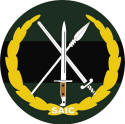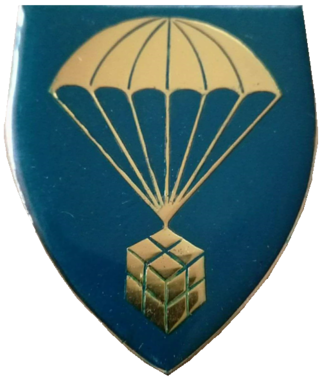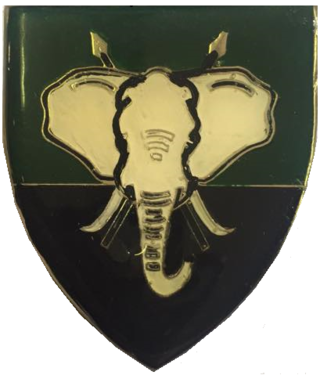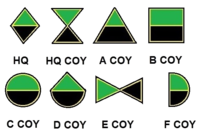
The South African Army is the principal land warfare force of South Africa, a part of the South African National Defence Force (SANDF), along with the South African Air Force, South African Navy and South African Military Health Service. The Army is commanded by the Chief of the Army, who is subordinate to the Chief of the SANDF.

The South African Army Infantry Formation supervises all infantry within the South African Army.

Andrew Mlangeni Regiment is a reserve infantry regiment of the South African Army.

8 South African Infantry Battalion is a mechanized infantry unit of the South African Army. The battalion is equipped with Ratel Infantry Fighting Vehicles (IFV) used for fast transport and combat mobility across rough ground. Support weapons for mechanized infantry are also provided with motorized transport, or are built directly into these IFVs, in order to keep pace with the IFVs in combat. The battalion was raised at Upington in the Northern Cape in 1973 as part of the South African Infantry Corps, and since the change in structure, has been assigned to the Infantry Formation.

The 101 Air Supply Unit is a parachute unit of the South African Ordnance Services Corps. Formed in 1963, it has supported the 44 Parachute Brigade, now the 44 Parachute Regiment, since its establishment. It appears to be based at Lyttelton, Gauteng.

Eastern Province Command was a command of the South African Army.

15 South African Infantry Battalion is a motorised infantry unit of the South African Army.

121 South African Infantry Battalion is a motorised infantry unit of the South African Army.

The OR Tambo Regiment is a reserve infantry regiment of the South African Army.

11 South African Infantry Battalion was a motorised infantry unit of the South African Army. Infantry men are soldiers who are specifically trained for the role of fighting on foot, historically this infantry has provided the most among of casualties during war.

111 Battalion was a motorised infantry unit of the South African Army.

113 Battalion was a motorised infantry unit of the South African Army.

116 Battalion was a motorised infantry unit of the South African Army.

151 South African Infantry Battalion was a motorised infantry unit of the South African Army.

111 Battalion was a motorised infantry unit of the South African Army.

115 South African Infantry Battalion was a motorised infantry unit of the South African Army.

118 South African Infantry Battalion was a motorised infantry unit of the South African Army.

15 Reception Depot was an administrative unit of the Personnel Service Corps of the South African Army.
Rank comparison charts of armies/land forces of apartheid states and territories in Southern Africa.






















